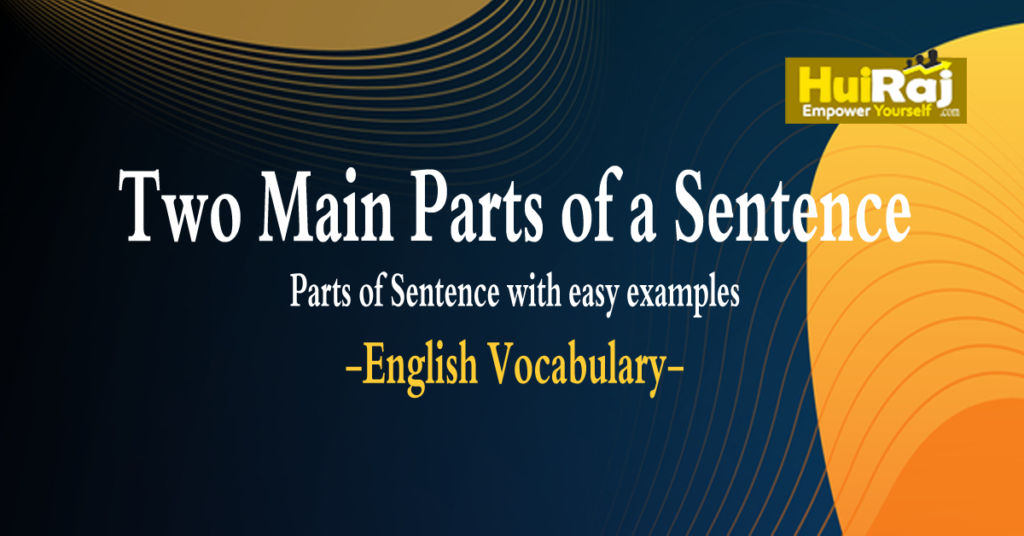Noun Phrase
We have seen that a Noun Phrase can occur in the subject or predicate part of a sentence. We call it a Noun Phrase because a Noun is the headword of the phrase. A Noun Phrase can be one word or more than one word.
Look at the following examples:
- Planes take off from here.
- A lot of planes take off from here.
In sentence 1, the Noun Phrase ‘Planes’ is a one-word Noun Phrase and it is the head noun.
But in sentence 2, the Noun Phrase ‘ A lot of planes’ has more than one word and here ‘planes’ is the head noun. Recall that the head noun usually comes at the end of the noun phrases.
Constituents of the Noun Phrase (NP):
(i) A Noun Phrase may often have a single noun or pronoun. For example:
1. Radhika is away. She will come back soon.
| NOUN PHRASE | VERB | NOUN PHRASE |
| PRONOUN | NOUN | |
| I | saw | Radhika |
(ii) Sometimes demonstrative pronouns and wh-words like who(m), what and which etc act as Noun Phrases.
Examples:
- Those are lovely flowers.
- I never knew that.
- Who has seen my book?
- What did you see?
- Which is the capital of Orissa, Bhubaneswar or Cuttack?
Mark that in the above examples ‘those‘ and ‘that’ are demonstrative pronouns and wh-words who, what, and which in sentences 3,4, and 5 act as head nouns respectively.
Look at the following sentences:
- (a) These flowers are lovely.(b) I never knew that boy.
(iii) In the above sentences (i.e 1(a) and (b) these and that are not demonstrative pronouns. They are demonstrative adjectives because they modify the head nouns flowers and boy respectively.
(iv) Determiners
Study the following examples:
- (c) The poor man is hungry. (d) His brother is a rich man.
The Noun Phrases in sentences 1 (c) and (d) begin with words such as ‘the, his, and ‘a’. Such words are known as DETERMINERS.
The DETERMINER in a NOUN PHRASE can an Article (a/an, the), a demonstrative (this, that, these, those), a Possessive (my, our, your, his, her, their etc.), a Wh-word/Question Word (what, which, whose, etc), or a quantifying word (much, many, few, a few etc)
Look at the following table. Mark the different classes of Determiners.
| Class | Words | Examples in Noun Phrases |
| Articles | a/an, the | A chair (Article + Noun), An important person (Article + Adjective + Noun) A brave Indian. (Article + Adjective + Noun ) |
| Demonstrative | This, that, these, those | This book, (Demonstrative + Noun) Those useful books. (Demonstrative + Adj. + Noun) |
| Possessives | My, our, your, his, her, Author’s | My elder brother. (Possessives +Adj.+ Noun) Their valuable possession, Sheela’s friends, etc. |
| Wh-determiners | What, which, whose | What colour, Which girl, Whose book (wh-determiner + Noun) |
| Quantifying determiners | Much, many, some, any, (a) few, one, two, one, two, first, second, etc. | Numerical (cardinal/ordinal) ‘determiners” |
(v) Now read sentence 1 (c) again. In the Noun Phrase ‘The poor man’, the word ‘poor’ is between the determiner and the head noun. This word tells us about the quality of the head noun ‘man’. So we call it an ADJECTIVE. This Noun Phrase has three main elements.
Look at the following diagram to know the order of the three main elements in the Noun Phrase.
We have already come across ORDINALS (e.g. first, second, next, last, etc) and QUANTIFIERS (e.g. many, much, few, a few, little, a little, each, every, one, two, three, some, several, more, most, etc).
(vi) In a Noun Phrase, the ordinal may be followed by a quantifier. (It is not necessary that there should be an ordinal in a Noun phrase.) A Noun Phrase may consist of determiners, ordinal, quantifier, and the head noun.
See the diagram given below: His first ten stories

(vii) Study the following sentence:
13. Many beautifully painted pictures are here. Here in the structure of the Noun Phrase, the quantifier (e.g. many) is followed by an adjective phrase (e.g beautifully painted), in this adjective phrase, the adjective goes with the Intensifier ‘beautifully’.
Now we can expand our earlier diagram to Many beautifully painted pictures
Note that it is possible to have more than one Adjective Phrase in a Noun Phrase. (e.g. the tired old man, an attractive young girl.
(viii) Consider the following Noun Phrase:
(a) A science college.
(b) A stone building.
(C). All the boys.
(d). Half of my fancy hats.
The underlined elements in ‘a‘ and ‘ b’ Noun phrases in the above examples are known as CLASSIFIERS. A classifier is a noun which functions as an adjective.
In c and d Noun phrases in the above examples, the underlined elements are known as PRE DETERMINERS. They come before the determiner in a Noun Phrase.
Look at the following diagram. Mark the position of the elements in the Noun Phrase:
Examples: All the four very nice Usha fans
Note that all these pre-determiners have of constructions which are optional with nouns and obligatory (compulsory)with personal pronouns.
Look at the following list:
‘of‘ is Optional with Nouns
-all (of) the boys
-both (of) the players
-half (of) the time
‘Of’ is Obligatory with personal pronouns.
-all of them.
-both of us.
-None of them/ you
-Half of it.
These Pre-determiner words can also be used as pronouns:
Example: All/Both/Half passed the examination.
EXERCISE
Exercise-1
Spot the Noun Phrases in the following sentences. Then identify the determiners and say what class each belongs to:
- That silly donkey is away.
- Those people are busy.
- Not much rice is grown in Orissa.
- Many committees have not been useful to the public.
- Have pity on the starving child.
- All of you can do the sum.
- The little girl is always talking.
- He has one sister and two brothers.
- The author’s first book was very popular.
- The Indian cricket team brought all the famous victories.
- I heard his first three words.
- All these four empty bottles are here.
- Mary’s mother is dead but her father is still alive.
- Which colour do you like, red or green?
- Whose book is this?
Exercise-2
Put the elements of each Noun Phrase in the right order:
- first, books, his, ten
- big, the, boys, three
- the, planes, five, first
- her, sarees, beautiful, all
- nice, a , movie, very
- very, boys, innocent, young
- famous, seven, schools, those, music
- old , the , man, silly
Exercise-3
Draw tree diagrams showing the different elements of the following Noun Phrases;
- All boys.
- All the boys.
- Each of the students
- A ripe red fruit.
- Those strange stories.
- Rajesh is good boy.
Exercise-4
Complete the following Noun Phrases by filling in the blanks with suitable words.
- __________ ___________ picnic.
- __________ ___________ house.
- All __________ ___________ boys.
- The __________ ___________ books.
- Our __________ ___________ teacher.

